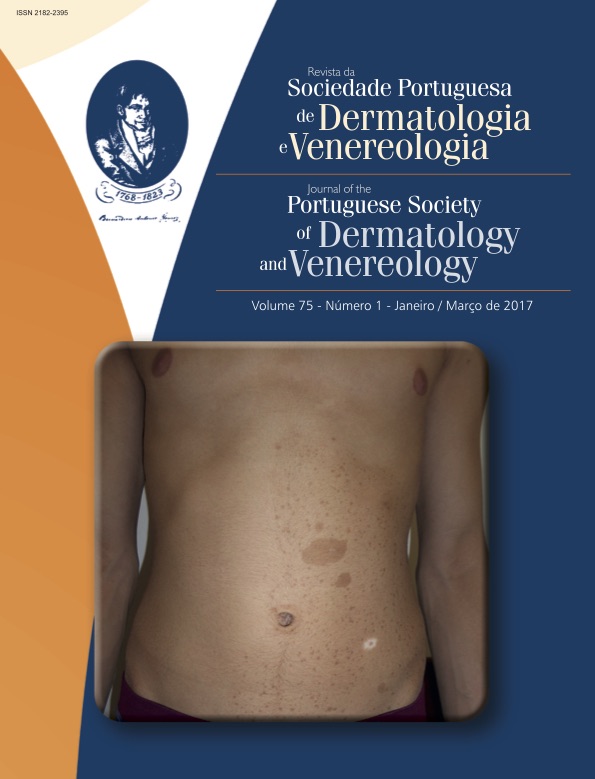Pseudoainhum in a Patient with Mixed Connective Tissue Disease: An Uncommon Association
Abstract
The term pseudoainhum is used to describe constricting band(s) around one or more digits in relation to several congenital or acquired diseases. Systemic sclerosis, keratoderma, psoriasis, Reynolds syndrome among others, has been reported to be associated with pseudoainhum development. We report a case of a 54 years old woman with annular constricting bands and micronychia on the fourth and fifth digits of her both hands associated with bilateral distal acrosclerosis. Raynaud’s phenomenon with some years of evolution and, more recent, fatigue and recurrent inflammatory polyarthritis and also antinuclear and anti-U1 nuclear ribonucleoprotein antibodies were present. Therefore, the diagnoses of pseudoainhum with a likely association with mixed connective tissue disease were proposed. Whenever in the presence of pseudoainhum, a detailed workup, including autoimmune disorders screening, is mandatory in order to rule out possible associated syndromes or underlying diseases. The authors present this case as the association between pseudoainhum and mixed connective tissue disease has not been previously reported in the literature.
Downloads
References
Rashid RM, Cowan E, Abbasi SA, Brieva J, Alam M. Destructive
deformation of the digits with auto-amputation:
a review of pseudo-ainhum. J Eur Acad Dermatol Venereol.
; 21:732-7.
Wollina U, Graefe T, Oelzner P, Hein G, Schreiber G.
Pseudoainhum of all fingers associated with Reynolds’
syndrome and breast cancer: report of a case and review
of the literature. J Am Acad Dermatol. 2001; 44 (2
Suppl.):381-4.
Prabhu R, Kannan NS, Vinoth S, Praveen CB. Ainhum -
a rare case report. J Clin Diagn Res. 2016; 10:17-8.
Sharma RC, Sharma AK, Sharma NL. Pseudo-ainhum
in discoid lupus erythematosus. J Dermatol. 1998;
:275-6.
Almond SL, Curley RK, Feldberg L. Pseudoainhum in
chronic psoriasis. Br J Dermatol. 2003; 149:1064-6.
Farhey Y, Hess EV. Review: mixed connective tissue disease.
Arthritis Care Res. 1997; 10: 333-42.
van den Hoogen F, Khanna D, Fransen J, Johnson SR,
Baron M, Tyndall A. 2013 classification criteria for systemic
sclerosis: an American College of Rheumatology/
European League against Rheumatism collaborative initiative.
Arthritis Rheum. 2013; 65:2737-47.
Park BS, Cho KH, Youn JI, Chung JH. Pseudoainhum associated
with linear scleroderma. Arch Dermatol. 1996;
:1520-1.
Chang Sing Pang A, Oranje A, Vuzevki V, Stolz E. Successful
treatment of keratoderma hereditaria mutilans
with an aromatic retinoid. Arch Dermatol. 1981;
:225-8.
Camisa C, Rossana C. Variant of keratoderma hereditaria
mutilans (Vohwinkel’s syndrome). Arch Dermatol.
; 120:1323-8.
Tajima S, Suzuki Y, Inazumi T. A case of atypical localized
scleroderma presenting with pseudoainhum: treatment
with tranilas.t, an anti-fibrotic agent. Acta Derm
Venereol. 1996; 76:162.
All articles in this journal are Open Access under the Creative Commons Attribution-NonCommercial 4.0 International License (CC BY-NC 4.0).








